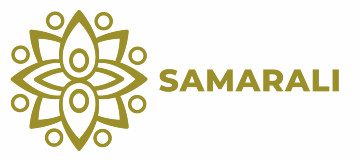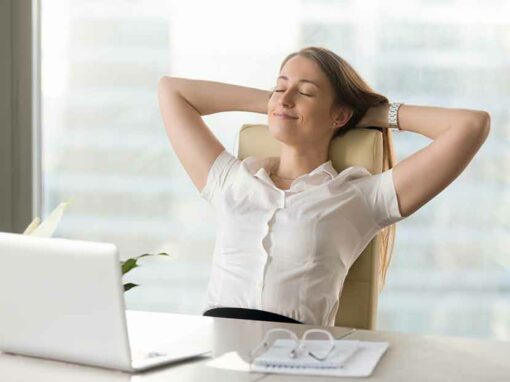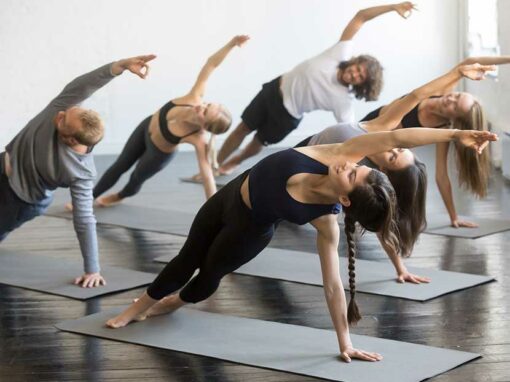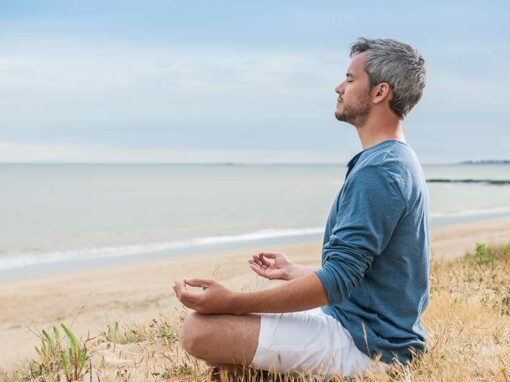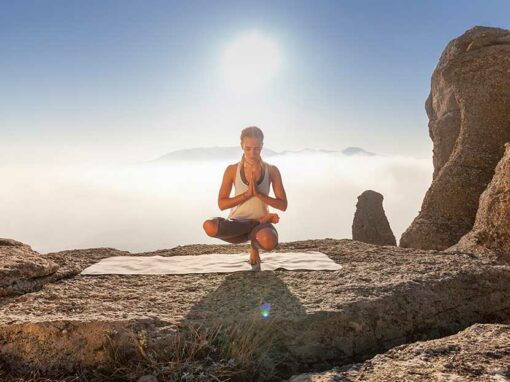Yoga Props Aren’t Only For Beginners: 5 Reasons Why To Use Blocks, Straps, And Bolsters
– Guest blog post by Marianna –
At the beginning of my yoga journey, I barely used yoga props. I often felt that it was unnecessary to use a block or strap because we’re supposed to make efforts when we practice and not make things easier, aren’t we?
But a few conversations with different teachers, especially during my YTT (Yoga Teachers Training), were truly eye-opening.
I began to realize that using props is not a sign of being less capable or lazy, but they can be very helpful in experiencing the pose, especially the sthira sukham asanam – steadiness, ease, and presence of mind.
The use of yoga gear can be dated back to the 1970s when yoga has started being more popular and more focused on asanas.
Teachers like Iyengar began to experiment to make yoga more inclusive and accessible to people with injuries, less flexibility, and the elderly.
The first time I used a bolster was for Savasana, under my knees, and I suddenly felt a sense of release on my lower back.


I used it now, especially at the end of the day, for more restorative poses. It’s like taking a mini-vacation during which the posture becomes my refuge.
Here’s Why We All Should Give Yoga Props A Try
1. Experience The Benefits Of The Whole Asana
We are not all flexible by nature; therefore, props offer accessible variations so everyone can experience the pose true to their own body’s needs.
For example, in Halasana (Plough pose), you can place a block on the floor behind your head to support your folded legs, in case the lower back and hamstrings’ lack of flexibility prevents you from touching the floor with your feet.
2. Breathing And Meditation
When used correctly, props can give you the chance to learn the true mechanics of the pose.
In Trikonasana, placing the block outside your front foot allows you to focus more on opening your chest, aligning your hips, and not collapsing the chest to reach your big toe.
3. Awareness
Realizing that we need a block or questioning why we do not want to use support gives us feedback about our bodies and minds. We can address the issue and work toward it.
4. Experiment
Some poses look unreachable because your body is simply not ready for it, not strong, not flexible enough.
But you really miss out on not giving a chance by using some help.
When I first tried Astavakrasana (Eight-angle pose) or the jumping through to sit, I managed to lift my body at first by placing my hands on the blocks.
In this way, props make progressions less intimidating.
Be aware, though, do not rely too much on that help. Sooner or later, you should give your headstand a try without the wall.


5. Deep Relaxation
Even though you may not be a Restorative yoga nerd, props can help to find a bit of relaxation.
Bolsters are a pillar of Restorative Yoga. We can place a bolster under our chest, back, or under knees in poses such as:
- Supta Baddha Konasana (Reclining Bound Angle Pose)
- Supported Child Pose
- Savasana
- Reclined Twist
- Seated Forward Fold
Using props reminds me of an important lesson. We don’t have to carry the weight of the world all on our own.
It’s okay to accept help and to lean on others. Or, in this case, lean on some blankets and pillows for support.
According to Iyengar’s definition, a prop is “any object that helps stretch, strengthen, relax, or improve the body’s alignment”.
Objects more commonly considered props include bricks, bolsters, blankets, straps, walls, eye pillows, wheels, chairs.
When using a prop, and in general, when you practice yoga, it is best to be led by how you feel, rather than what a shape or pose looks like.
Marianna has been practicing Yoga for more than eight years, and in 2020
she completed the 200h Yoga Teacher Training in Vinyasa at YogaMoves in Utrecht.
She is passionate about sharing Yoga with others, living more sustainably,
and traveling. Her INSTAGRAM page: https://www.instagram.com/greenyogawithme/
